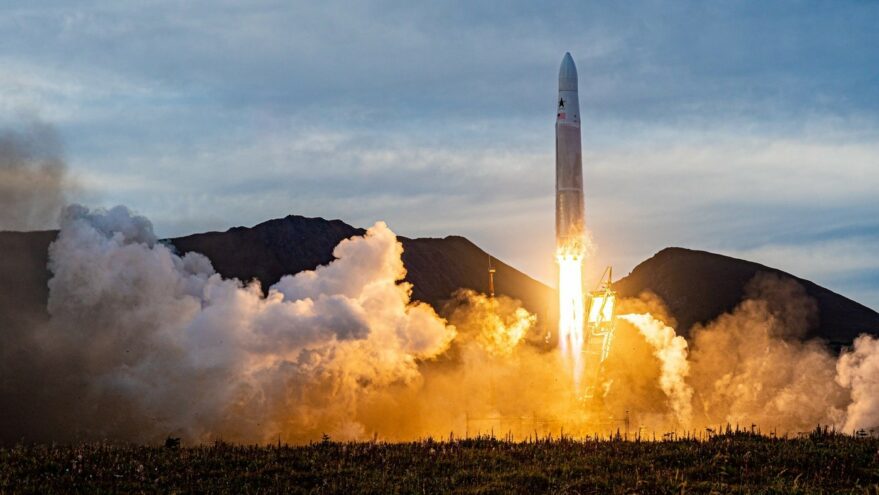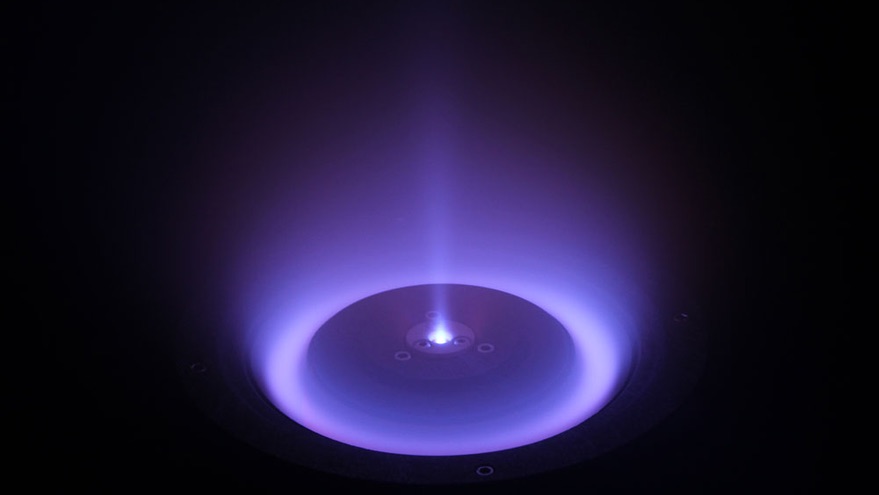Products You May Like
WASHINGTON — Launch vehicle developer Astra is acquiring Apollo Fusion, a company developing electric propulsion systems for spacecraft, as part of its effort to create vertically integrated space systems.
Astra is purchasing Apollo Fusion for $30 million in stock and $20 million in cash in a deal announced June 7. The deal includes an additional $95 million in earn-out incentives if Apollo Fusion reaches certain technical and revenue milestones.
Astra will incorporate Apollo Fusion’s Apollo Constellation Engine electric propulsion systems in satellite buses the company is developing to provide an integrated solution to customers. Astra revealed its satellite plans in February when it announced it would merge with a special purpose acquisition company (SPAC), Holicity. The companies said the acquisition will close after Astra completes its merger with Holicity later this year.
In an interview, Chris Kemp, chief executive of Astra, said that Apollo Fusion’s thrusters fill a technology gap for those future satellites. “What this is about is adding a really core piece of technology to Astra’s platform,” he said. “It’ll unlock a whole new set of customer opportunities for us.”
“The next puzzle piece is the vertically integrated spacecraft. So, as we started to look at that, what are the core technologies that drive that?” he said. “This engine is one of those key cornerstones of that space platform we’re building.”
Mike Cassidy, chief executive of Apollo Fusion, said customers of both his company’s thrusters and Astra’s rockets were looking for an integrated solution. “A lot of our customers were asking us for the total solution for getting from the ground from the orbit they want to go, and Chris’s customers are asking the same thing,” he said in an interview.
Apollo Fusion, which has sold its Apollo Constellation Engine to several customers, most recently York Space Systems, will continue to market the thruster to other companies. “We are financially motivated to do that part of the deal, and Astra has made very good incentives for us to keep doing that,” Cassidy said.
“Mike has an incredible customer manifest and pipeline, and we want to continue to serve those customers,” Kemp said. “But we’re incorporating what they’re doing into our product as quickly as we can.”
Both companies have emphasized plans for mass production of their systems. Astra has a goal of performing daily launches as soon as the middle of the decade, while Apollo Fusion has emphasized production partnerships that would allow it to manufacture its thrusters in large quantities.
Cassidy said he expects to leverage Astra’s projected launch cadence to speed up development and testing of new thrusters. “The way it is now, we have to wait 9 or 12 months to do a test launch,” he said. “But in the future, we’ll be able to do a test launch in two or four months.”
Kemp said he saw a lot of similarities between the two companies, and having known Cassidy for several years, it was clear that a deal made sense. “It’s really like we’re sister companies and their technology was just a big missing piece of our overall platform,” he said.

Astra roadmap
Astra’s acquisition of Apollo Fusion is the latest in a series of developments for the company. It announced May 18 a contract with Planet to perform multiple launches of Planet’s imaging satellites in 2022.
Kemp said in the interview that Astra has more than 50 launches under contract, serving a mix of government and commercial customers, although Planet is the first customer it’s publicly announced. “Planet is probably the pioneer in the small satellite space,” he said. “We couldn’t be more proud to have them as the first customer we could announce.”
Astra also disclosed that it has a roadmap to develop larger vehicles, with the goal of placing up to 500 kilograms into orbit. The company did not disclose technical details of that roadmap, or a schedule for producing those larger vehicles.
Kemp said plans for various megaconstellations influenced that roadmap. “We want to converge with what these megaconstellation operators are designing and flying in 2023,” he said. “It’s about being the most responsive launch service provider and also being the best way for us to build our own platform.”
He described an iterative process for gradually scaling up the company’s launch vehicles to achieve that 500-kilogram target. “My goal is to have as many iterations as possible, where the engineers can add these things incrementally,” he said, gradually increasing performance instead of making a big jump from 50 to 500 kilograms.
Up next for Astra is beginning commercial launches. Kemp said the company’s next launch, after a December 2020 flight that nearly reached orbit, is scheduled for this summer. Astra expects to begin monthly launches in the fourth quarter.
